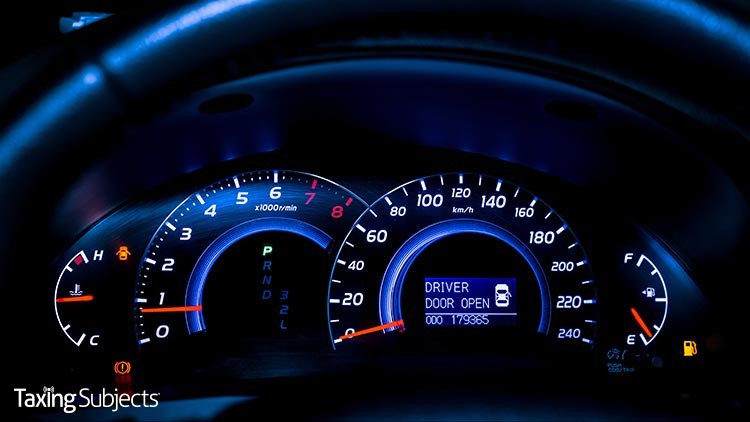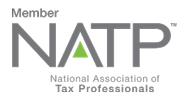by | Jan 29, 2020 | Tax Tips and News
From Uber to AirBnB, Lyft to TaskRabbit, more Americans are getting involved in the gig economy. Whether their involvement is just a side hustle or the main event, taxpayers can find income earned in this way can affect their tax returns—and it’s not always in a positive way.
The Internal Revenue Service says a little pre-planning can help gig economy workers be ready when it’s time to file their taxes.
Defining the Gig Economy
The gig economy is known by a few different names; it has also been called the on-demand economy, the sharing economy or the access economy. People involved in the gig economy may earn income as a freelancer, independent worker or employee. They use technology to provide goods or services. This includes things like renting out a home or spare bedroom and providing car rides.
There are a few things taxpayers should know about the gig economy and taxes:
- Money earned through this work is usually taxable.
- There are tax implications for both the company providing the platform and the individual performing the services.
- This income is usually taxable even if the:
o Taxpayer providing the service doesn’t receive an information return, like a Form 1099-MISC, Form 1099-K, or Form W-2.
o Activity is only part-time or side work.
o Taxpayer is paid in cash. - People working in the gig economy are generally required to pay:
o Income taxes.
o Federal Insurance Contribution Act or Self-employment Contribution Act tax.
o Additional Medicare taxes.
Independent contractors may be able to deduct their business expenses, but they should double-check IRS rules when it comes to deducting expenses relating to use of things like their car or home. Remember to always keep records of business expenses.
Special rules apply to rental property when it’s also used as a residence during the tax year. Taxpayers should remember that rental income is generally fully taxable.
Workers who don’t have taxes withheld from their side hustle pay have two choices to pay their taxes in advance. Gig economy workers who have another job where the employer withholds taxes from their paycheck can fill out and submit a new Form W-4. This is done to request that the withholding employer sets aside an additional amount in order to cover taxes owed on the gig economy income.
Another way to stay on the good side of the IRS is to make quarterly estimated tax payments. This way, the taxpayer can pay taxes and any self-employment taxes owed throughout the year.
– Story provided by TaxingSubjects.com
by | Jan 17, 2020 | Tax Tips and News
What is the Gig Economy Tax Center?
Freelancers aren’t a new part of the workforce, but the rapid growth of contract labor has popularized terms like “gig economy” and “on-demand work.” To help taxpayers, the Internal Revenue Service unveiled a new online resource: the Gig Economy Tax Center.
The IRS explains that the gig economy largely gained momentum through app-driven services: “The gig economy … usually includes businesses that operate an app or website to connect people to provide services to customers. While there are many types of gig economy businesses, ride-sharing and home rentals are two of the most popular.”
Taxpayers accustomed to earning their income as an employee might not realize they need to keep track of the extra money generated by their weekend Uber work: “Many don’t receive Form W-2s, 1099s, or other information returns for their work … [despite the fact that] income from these sources is generally taxable, regardless of whether workers receive information returns.” Further, newly minted freelancers also might not realize there are other responsibilities that come with taking on contracted work.
The IRS hopes to address these awareness problems with the Gig Economy Tax Center, which will help fill in the blanks on a number of freelance tax issues:
- Filing requirements
- Making quarterly estimated income tax payments
- Paying self-employment taxes
- Paying FICA, Medicare, and Additional Medicare
- Deductible business expenses
- Special rules for reporting vacation home rentals
While these resources are not a replacement for a qualified tax professional, they can be an excellent supplement for taxpayers to lean on when putting together their information packet.
How do I use the Gig Economy Tax Center?
The first thing you see after navigating to the Gig Economy Tax Center are subheadings addressing basic gig economy topics—“What is the Gig Economy?,” “Gig Economy Income is Taxable,” “What is Gig Work?”—and two blue buttons in the middle of the page: Manage Taxes for Your Gig Work and Digital Platforms for Businesses.
Manage Taxes for Your Gig Work provides a number of resources specific to independent contractors:
- Accordion menu containing a to-do list that includes links to relevant publications and forms for topics like record keeping, making payments, and preparing tax information for filing a tax return
- Help menu with links to pages that explain IRS notices, the 1099-K, and how to determine if you’re an independent contractor or an employee
- Estimated tax information, like due dates and a Make a Payment button that links to the “Paying Your Taxes” page
Digital Platforms for Businesses has information tailored to taxpayers who “operate a digital platform, marketplace, or business in the gig economy.” At first glance, this page looks sparse when compared to Manage Taxes for Your Gig Work, but the accordion menu contains information for four important business topics: “Classify Workers,” “Report Payments,” “File and Pay Taxes,” and “Help Workers Meet Their Tax Obligations.”
Sources: IR-2020-04; “Gig Economy Tax Center”
– Story provided by TaxingSubjects.com
by | Jan 16, 2020 | Tax Tips and News
Updated January 15, 2020: We incorrectly listed the standard mileage rate for business use as 5 cents per mile.
The Internal Revenue Service has set the optional standard mileage rates for 2020. These rates are used to figure the deductible costs of operating a vehicle for business, charitable, medical or moving purposes.
Beginning Jan. 1, 2020, the standard mileage rates for the use of a car (also vans, pickups or panel trucks) will be:
- 57.5 cents per mile driven for business use, down one half of a cent from the rate for 2019,
- 17 cents per mile driven for medical or moving purposes, down three cents from the rate for 2019, and
- 14 cents per mile driven in service of charitable organizations.
The business mileage rate decreased one half of a cent for business travel driven and three cents for medical and certain moving expense from the rates for 2019. The charitable rate is set by statute and remains unchanged.
Deductions Eliminated by Tax Reform
The Tax Cuts and Jobs Act eliminated miscellaneous itemized deductions for unreimbursed employee travel expenses and moving expenses. Only members of the Armed Forces on active duty, who move under orders to a permanent change of station, qualify for a moving expense deduction. Rev. Proc. 2019-46 has more details.
The business standard mileage rate is based on an annual study of the fixed and variable costs of operating a vehicle. The medical and moving rates are based on variable costs only.
Taxpayers continue to have the option of using the actual costs of using their vehicle rather than the standard mileage rates.
Caveats
The IRS has a few cautions for taxpayers and tax preparers alike when it comes to using mileage rates to calculate the deduction.
“A taxpayer may not use the business standard mileage rate for a vehicle after using any depreciation method under the Modified Accelerated Cost Recovery System (MACRS) or after claiming a Section 179 deduction for that vehicle,” an IRS release states. “In addition, the business standard mileage rate cannot be used for more than five vehicles used simultaneously.”
These limitations are discussed in more detail in Rev. Proc. 2019-46.
For more on mileage rates and other questions, check out Notice 2020-05, posted on IRS.gov. The Notice contains the standard mileage rates, the amount a taxpayer must use in calculating reductions to basis for depreciation taken under the business standard mileage rate, and the maximum standard automobile cost that a taxpayer may use in figuring the allowance under a fixed and variable rate plan.
For employer-provided vehicles, the Notice provides the maximum fair market value of automobiles first made available to employees for personal use in calendar year 2020 for which employers may use the fleet-average valuation rule in § 1.61-21(d)(5)(v) or the vehicle cents-per-mile valuation rule in § 1.61-21(e).
– Story provided by TaxingSubjects.com
by | Jan 7, 2020 | Tax Tips and News
The Internal Revenue Service has confirmed that it will begin accepting and processing 2019 returns on January 27, opening the gates for millions of individual tax return filers. The deadline for filing and paying any tax due remains Wednesday, April 15.
More than 150 million individual tax returns are expected to be filed for the 2019 tax year, the vast majority of those coming before the April deadline.
“As we enter the filing season, taxpayers should know that the dedicated workforce of the IRS stands ready to help,” said IRS Commissioner Chuck Rettig. “We encourage taxpayers to plan ahead and use the tools and information available on IRS.gov. The IRS and the nation’s tax community are committed to making this another smooth filing season.”
The IRS says it set the opening date on January 27 so the agency could better ensure the security and readiness of its key tax processing computer systems while checking that IRS automated procedures are set to implement recent tax legislation for 2019 returns.
Commissioner Rettig says for best service, the taxpayer has a couple of important choices to make. “The IRS encourages everyone to consider filing electronically and choosing direct deposit,” Rettig said. “It’s fast, accurate and the best way to get your refund as quickly as possible.”
IRS reminds taxpayers that they don’t have to wait until January 27 to start their tax return or contact a reputable tax preparer.
In addition, IRS tax help is available 24 hours a day on IRS.gov, the official IRS website, where people can find answers to tax questions and resolve tax issues online. The Let Us Help You page helps answer most tax questions, and the IRS Services Guide (PDF) links to these and other IRS services.
Source: IR-2020-02
– Story provided by TaxingSubjects.com









